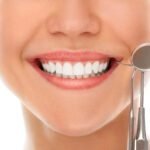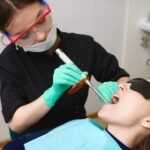Table of Contents
Understanding the impact of COVID-19 on oral health
The COVID-19 pandemic has had a significant impact on various aspects of our lives, and oral health is no exception. With the implementation of lockdown measures and social distancing guidelines, many individuals may have experienced disruptions in their regular dental care routines.
One of the primary concerns during the pandemic has been the delay or cancellation of routine dental appointments. Regular dental check-ups and cleanings are crucial for maintaining good oral health and preventing dental issues from progressing. When these appointments are missed, there is a higher risk of dental diseases such as cavities, gum disease, and infections going unnoticed and untreated. Additionally, postponed treatments for existing dental conditions can lead to further complications and discomfort. It is essential for individuals to stay in touch with their dental care providers to reschedule missed appointments and seek help for any dental concerns.
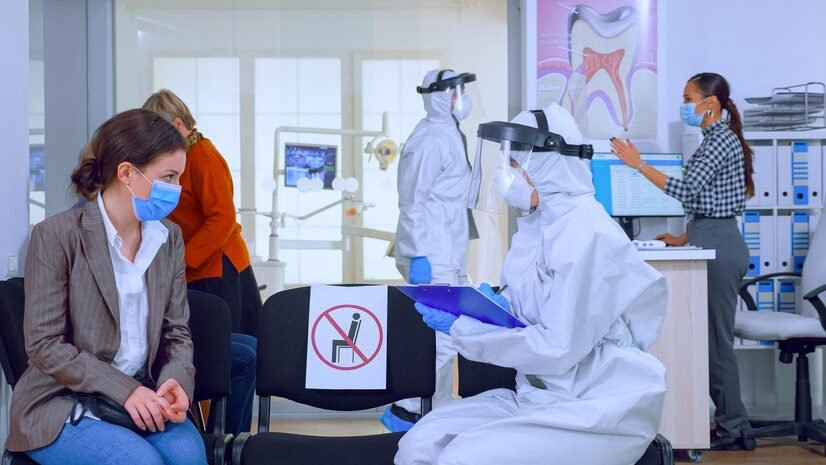
Creating a positive and engaging learning environment for children
Creating a positive and engaging learning environment is crucial when teaching children about oral health. By providing an environment that is inviting and stimulating, children are more likely to be motivated and enthusiastic about learning. Incorporating interactive activities and games can make the learning process enjoyable and memorable for children. These activities not only enhance their understanding of oral health but also foster their creativity and problem-solving skills.
One effective method is to use visuals and multimedia to enhance the learning experiences. By using images, videos, and interactive presentations, children can visualize and grasp the concepts more easily. Additionally, incorporating colorful and visually appealing materials can capture their attention and make the learning process more engaging. This allows children to actively participate in the learning process and increases their retention of information. Moreover, utilizing technology such as educational apps or online platforms can further enhance their learning experience and provide additional resources for exploration.
Incorporating interactive activities and games to teach oral health
Incorporating interactive activities and games into oral health education can make learning fun and engaging for children. Interactive activities allow children to actively participate in the learning process, which enhances their understanding and retention of information. By incorporating games, such as oral health trivia or tooth brushing races, children become more excited and motivated to learn about proper oral care.
These interactive activities and games also provide an opportunity for children to practice and reinforce their oral health habits in a playful and enjoyable manner. For instance, a game that involves identifying and sorting healthy and unhealthy foods for teeth can help children understand the importance of a balanced diet for good oral health. By making oral health education interactive, children not only learn valuable information but also develop healthy habits that will benefit them in the long run.
| Activity/Game | Description |
|---|---|
| Toothbrushing Relay | Divide participants into teams. Each team races to properly brush a set of teeth (either on a model or large drawing) using a toothbrush and toothpaste. The team with the cleanest teeth wins. |
| Healthy Snack Sorting | Provide a variety of food pictures or actual snacks. Have participants sort them into “healthy for teeth” and “unhealthy for teeth” categories, discussing the impact of different foods on oral health. |
| Dental Charades | Create a list of oral health-related terms or actions (e.g., flossing, brushing, dentist visit) and have participants act them out while others guess what they are. |
| Cavity Detection Game | Use disclosing tablets or solution to temporarily stain plaque on teeth. Participants use a mirror to identify stained areas, emphasizing the importance of thorough brushing to prevent cavities. |
| Oral Health Bingo | Create bingo cards featuring oral health-related terms or pictures of healthy dental habits. Call out terms or show pictures, and participants mark off corresponding squares on their cards. |
| “Tooth or Consequences” | A spin-off of “Truth or Dare” where participants must answer oral health-related questions truthfully or perform a dental health-related challenge or activity as a consequence. |
| Tooth Fairy Tales | Encourage participants to create and share imaginative stories about the tooth fairy and how she promotes good oral health habits. This activity can inspire creativity and reinforce oral health concepts in a fun way. |
Using visuals and multimedia to enhance learning experiences
In today’s digital age, using visuals and multimedia in education has become increasingly important, as it enhances learning experiences and engages students in a way that traditional methods cannot. This holds true for oral health education as well, where incorporating visuals and multimedia can significantly improve understanding and retention of important concepts.
Visuals such as diagrams, charts, and infographics can help children grasp complex dental concepts by presenting information in a clear and concise manner. For example, a diagram showing the different parts of a tooth can make it easier for children to understand the importance of proper brushing and flossing techniques. Similarly, charts illustrating the effects of sugary foods and drinks on teeth can emphasize the need for a balanced diet and regular dental check-ups.
In addition to visuals, multimedia elements such as videos and interactive games can also enhance learning experiences. Videos can provide step-by-step demonstrations of proper brushing techniques, making it easier for children to learn and emulate good oral hygiene practices. Interactive games, on the other hand, can make learning fun and engaging, encouraging children to actively participate and retain information better.
By using visuals and multimedia in oral health education, dental professionals can create a dynamic and interactive learning environment that appeals to children’s natural curiosity and desire for stimulation. This not only improves understanding and knowledge retention but also promotes a positive attitude towards oral health, setting the foundation for a lifetime of good dental habits.
Explaining the importance of regular brushing and flossing
Regular brushing and flossing are crucial for maintaining good oral health. These daily habits help to remove plaque, a sticky film of bacteria that can accumulate on our teeth and gums. If left untreated, this plaque can lead to tooth decay, gum disease, and other dental problems.
Brushing your teeth at least twice a day with a fluoride toothpaste helps to remove plaque and prevent tooth decay. It is important to use a soft-bristled toothbrush and gentle circular motions to clean all surfaces of your teeth, including the front, back, and chewing surfaces. Additionally, don’t forget to brush your tongue, as it can harbor bacteria and contribute to bad breath.
Flossing complements brushing by removing plaque and food particles from areas that your toothbrush cannot reach, such as between your teeth and along the gumline. This helps to prevent gum disease and keeps your gums healthy. Use a gentle back-and-forth motion to slide the floss between your teeth and curve it around each tooth in a “C” shape. Be sure to clean both sides of every tooth, including the back molars.
By incorporating regular brushing and flossing into your daily routine, you can maintain a healthy smile and prevent dental problems. Remember, taking care of your teeth now will pay off in the long run, allowing you to enjoy a lifetime of good oral health.
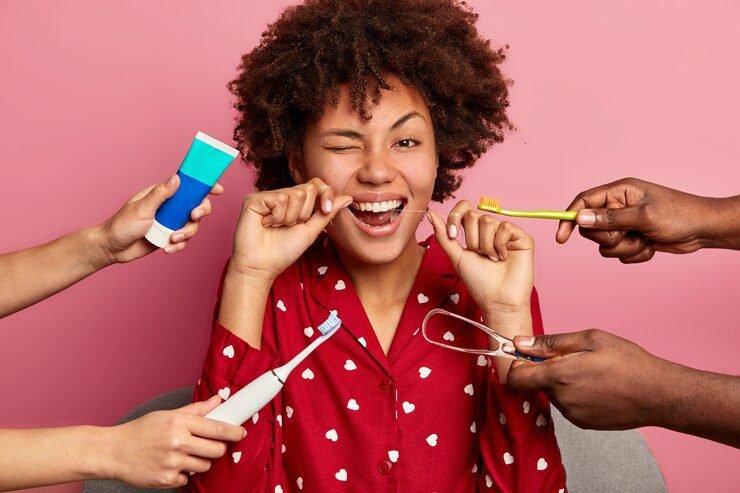
Teaching proper brushing techniques for children
Proper brushing techniques are essential for maintaining good oral health in children. Teaching children how to brush correctly ensures that they effectively remove plaque and prevent the buildup of bacteria and food particles that can lead to tooth decay and gum disease.
When teaching children how to brush, it is important to emphasize the following key steps. Firstly, they should hold the toothbrush at a 45-degree angle towards the gum line. This helps to clean along the gum line and prevent gum disease. Secondly, they should make gentle, circular motions rather than scrubbing back and forth, as this can damage the gums. Encouraging children to spend at least two minutes brushing their teeth will ensure that they thoroughly clean all surfaces, including the front, back, and chewing surfaces. Lastly, it is important to teach children how to brush their tongue gently to remove bacteria and freshen breath.
By teaching children proper brushing techniques, we can empower them to take control of their oral health from an early age. Regular, effective brushing not only prevents dental problems, but also instills good habits that will benefit them throughout their lives.
Introducing the concept of a balanced diet for good oral health
A balanced diet plays a crucial role in maintaining good oral health. It provides the necessary nutrients and minerals that support the growth and development of healthy teeth and gums. When we talk about a balanced diet, we mean a combination of fruits, vegetables, whole grains, lean proteins, and dairy products. These food groups provide essential vitamins, minerals, and antioxidants that strengthen the teeth, gums, and jaw muscles.
When it comes to oral health, it’s not just about avoiding sugary foods and drinks. While it’s true that excessive consumption of sugary snacks and beverages can contribute to tooth decay and cavities, it’s equally important to focus on consuming nutrient-rich foods. Nutrients like calcium, phosphorus, and vitamin C are essential for maintaining strong teeth and preventing gum diseases. Incorporating foods such as leafy greens, nuts, yogurt, and fish into your child’s diet can provide these nutrients and promote optimal oral health.
| Food Group | Importance for Oral Health | Examples |
|---|---|---|
| Fruits and Vegetables | Provide essential vitamins and minerals for gum health and overall oral health. | Apples, carrots, celery, spinach, broccoli |
| Dairy | High in calcium and phosphorus, which strengthen teeth and promote remineralization. | Milk, cheese, yogurt |
| Lean Proteins | Necessary for tissue repair and maintenance, including gum tissue. | Chicken, turkey, fish, lean beef, tofu |
| Whole Grains | Rich in B vitamins and iron, which are vital for gum health and preventing oral infections. | Brown rice, whole wheat bread, quinoa, oats |
| Water | Essential for saliva production, which helps cleanse the mouth and neutralize acids. | Plain water, herbal tea, infused water with fruits |
| Limit Sugary Foods | Excessive sugar can lead to tooth decay and gum disease. | Candy, soda, sugary snacks, sweetened beverages |
| Limit Acidic Foods | Acidic foods can erode tooth enamel and contribute to tooth sensitivity. | Citrus fruits, tomatoes, vinegar-based foods |
Discussing the effects of sugary foods and drinks on teeth
Sugary foods and drinks have long been a favorite among children, but their effects on teeth can be detrimental. When it comes to oral health, the consumption of excessive sugar can lead to a variety of problems. Firstly, sugary foods and drinks provide a breeding ground for harmful bacteria in the mouth. These bacteria feed on the sugars, producing acid as a byproduct. Over time, this acid can erode the protective enamel on teeth, leading to tooth decay and cavities.
Additionally, the frequent consumption of sugary foods and drinks can contribute to the development of plaque. Plaque is a sticky film of bacteria that forms on the teeth and gums. When combined with sugars, plaque becomes even more damaging to oral health. The bacteria in plaque can produce acids that attack the teeth, causing tooth decay and gum disease. Furthermore, the presence of plaque can also lead to bad breath and discoloration of the teeth.
It is important to educate children about the adverse effects of sugary foods and drinks on their oral health. By limiting their consumption of these items and encouraging healthier alternatives, parents and caregivers can help prevent the development of dental problems. It is also crucial to instill good oral hygiene habits, such as regular brushing and flossing, to maintain strong and healthy teeth.
Emphasizing the significance of regular dental check-ups
Regular dental check-ups are essential for maintaining good oral health and preventing the onset of dental problems. During these routine appointments, dentists can thoroughly examine the teeth and gums, assess oral hygiene practices, and identify any potential issues at an early stage. According to the American Dental Association, individuals should visit their dentist at least twice a year for check-ups and cleanings. These regular visits enable dentists to detect and treat dental problems such as cavities, gum disease, and oral cancer in their early stages, when they are easier to manage and less costly to treat.
In addition to conducting a comprehensive examination, dentists also perform professional cleanings during check-ups. Even with regular brushing and flossing, plaque can accumulate on the teeth and harden into tartar, which cannot be removed by regular homecare practices. Dental cleanings remove tartar build-up, reducing the risk of gum disease and tooth decay.
Dentists also provide education and guidance on proper oral hygiene techniques, such as brushing and flossing, to optimize oral health. These routine check-ups offer an opportunity for patients to discuss any concerns they may have and ask questions about their overall oral health. By keeping up with regular dental check-ups, individuals can ensure that their oral health is monitored and maintained effectively, contributing to a healthy smile for years to come.
Addressing common misconceptions about oral health
Misconceptions about oral health can prevent individuals from taking proper care of their teeth and gums, leading to potential dental problems down the line. It is crucial to address these misconceptions and provide accurate information to promote good oral health practices. One common misconception is that brushing alone is enough to maintain a healthy mouth. While brushing is an essential part of oral hygiene, it is not sufficient on its own. Regular flossing, along with brushing, is necessary to remove plaque and food particles from between the teeth and along the gumline.
Another misconception is that oral health only affects the mouth. In fact, poor oral health can have a significant impact on overall health and well-being. Research has shown that gum disease can be linked to various health conditions, such as heart disease, diabetes, and respiratory infections. It is important to educate individuals about the connection between oral health and systemic health to emphasize the importance of maintaining good oral hygiene habits. By dispelling these misconceptions and providing accurate information, we can encourage individuals to prioritize their oral health and take necessary steps to prevent dental problems in the long run.
Encouraging children to develop healthy oral habits at home
Developing healthy oral habits at home is crucial for children’s long-term dental health. By encouraging regular brushing, flossing, and overall oral hygiene practices, parents and caregivers can instill good habits that will benefit their children’s teeth and gums throughout their lives.
One effective way to promote healthy oral habits is by establishing a consistent routine. Encourage children to brush their teeth at least twice a day, in the morning and before bedtime, using a toothbrush and fluoride toothpaste appropriate for their age. Emphasize the importance of brushing for two minutes each time, ensuring that all surfaces of the teeth are thoroughly cleaned. Additionally, incorporating flossing into the routine will help remove plaque and food particles from between the teeth, preventing decay and gum disease.
Parents can lead by example, brushing and flossing alongside their children to make it a shared and enjoyable experience. By making oral hygiene a regular part of their daily routine, children will be more likely to continue these habits into adulthood, ensuring a lifetime of good oral health.
Involving parents and caregivers in oral health education
Parents and caregivers play a vital role in the oral health education of children. By actively involving them in the process, we can ensure that children receive consistent guidance and support in maintaining good oral hygiene habits. Involvement of parents and caregivers also helps create a positive and encouraging environment for children to learn and practice these habits.
One way to involve parents and caregivers is by organizing informative workshops or sessions on oral health education. These workshops can provide parents with practical knowledge about the importance of good oral hygiene, proper brushing techniques, and the role of a balanced diet in maintaining healthy teeth and gums. By imparting this knowledge, parents can then effectively guide and supervise their children in practicing these habits at home. Additionally, workshops can also address common misconceptions about oral health and provide parents with the necessary resources and tools to support their children’s dental care.
Another effective method of involving parents and caregivers is through regular communication. Dentists can provide informative materials, such as brochures or pamphlets, that can be shared with parents and caregivers. These materials can contain important information about oral health, tips for maintaining good oral hygiene, and answers to frequently asked questions. Regular communication can also include reminders about dental appointments and recommended preventive measures. By staying in touch and providing ongoing support, dentists can empower parents and caregivers to take an active role in their children’s oral health education.
Providing resources and tools for children to continue learning at home
As children continue to navigate the challenges posed by the COVID-19 pandemic, it is crucial to provide them with the necessary resources and tools to continue their learning at home. This not only ensures their academic progress but also enables them to maintain a focus on their oral health education. By offering a variety of resources and tools, children can engage with the subject matter in a meaningful and enjoyable way, further cementing their understanding and encouraging healthy habits.
One effective way to provide resources for children is through interactive online platforms and educational websites. Many reputable organizations and dental health professionals have developed online platforms specifically designed to educate children about oral health. These platforms often include interactive games, videos, and informative articles that engage and educate children on topics such as brushing techniques, the importance of fluoride, and the impact of a balanced diet on oral health. By harnessing the power of technology, these resources provide an opportunity for children to continue learning about oral health in an engaging and accessible manner.
Promoting the use of fluoride toothpaste and mouthwash
Fluoride toothpaste and mouthwash are essential components of a comprehensive oral hygiene routine. Fluoride is a natural mineral that helps to strengthen tooth enamel and protect against tooth decay. When used regularly and correctly, these products can significantly reduce the risk of cavities and promote overall oral health.
The benefits of fluoride toothpaste and mouthwash have been well-documented in numerous scientific studies. Research has shown that fluoride can remineralize early-stage tooth decay, reversing the damage and preventing further deterioration. In addition, fluoride helps to inhibit the growth of harmful bacteria in the mouth, reducing the risk of gum disease and other oral infections.
For children, using fluoride toothpaste and mouthwash from an early age is particularly crucial. The American Academy of Pediatric Dentistry recommends that children start using a fluoride toothpaste as soon as their first tooth erupts. It’s important to use only a pea-sized amount for young children to minimize the risk of fluorosis, a cosmetic condition that can occur with excessive fluoride intake. Additionally, supervised brushing and rinsing with fluoride mouthwash can be effective in preventing cavities and promoting optimal oral health in children. By incorporating fluoride toothpaste and mouthwash into their daily oral care routine, parents can take a proactive approach to protecting their children’s teeth and instilling lifelong habits of good oral hygiene.
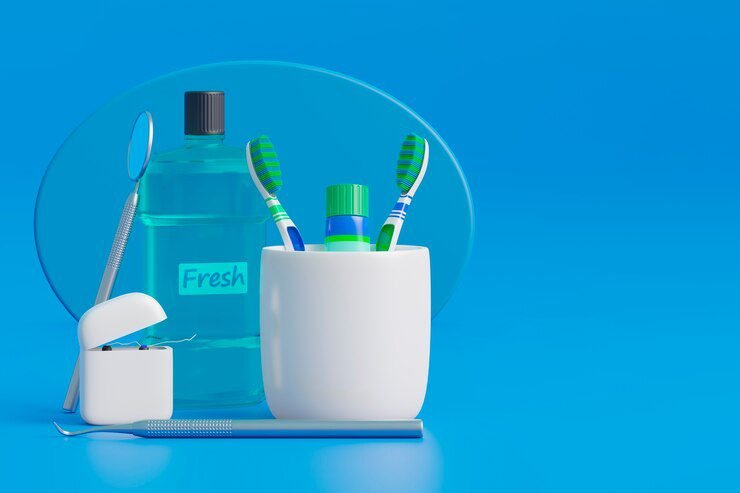
Discussing the benefits of dental sealants for children
Dental sealants are a valuable preventive measure that can greatly benefit children’s oral health. These thin, plastic coatings are applied to the chewing surfaces of the back teeth, where cavities are most commonly found. The main purpose of dental sealants is to act as a barrier, protecting the teeth from decay-causing bacteria and acids.
The benefits of dental sealants for children are numerous. First and foremost, they provide an extra layer of protection for the teeth, significantly reducing the risk of cavities. Research has shown that dental sealants can reduce the incidence of cavities by up to 80% in the first year alone. Furthermore, sealants can continue to protect against decay for many years, with studies demonstrating their effectiveness lasting up to 10 years.
Additionally, dental sealants are a non-invasive and painless procedure. The application of sealants involves thoroughly cleaning and drying the teeth before applying a special gel. This gel helps the sealant bond to the tooth surface, creating a strong and durable barrier. The entire process usually takes only a few minutes per tooth, making it a quick and convenient option for children.
Exploring the role of technology in oral health education for children.
Technology plays a significant role in oral health education for children, providing innovative and engaging ways to teach them about proper oral care. With the increasing use of smartphones, tablets, and computers, incorporating technology into dental education has become more accessible and effective.
Interactive dental apps and educational games, for instance, can make learning about oral health fun and enjoyable for children. These apps often include informative videos, quizzes, and interactive activities that teach children how to brush and floss correctly, the importance of a balanced diet, and the effects of sugary foods on teeth. By using technology, children can actively participate in their own learning process, making it more engaging and memorable.
Furthermore, technology enables the use of visuals and multimedia to enhance the learning experience. With the help of animations, images, and videos, children can better understand complex dental concepts, such as the structure of teeth, the effects of plaque buildup, and the role of dentists in maintaining oral health. Visual presentations provide a more comprehensive understanding of the topic, making it easier for children to remember and apply the knowledge they acquire.
In conclusion, technology plays a crucial role in oral health education for children, offering interactive apps and games that make learning enjoyable and informative. With the aid of visuals and multimedia, children can gain a deeper understanding of dental concepts, supporting them in making informed decisions about their oral health. By embracing technology in dental education, we can foster a generation of children who prioritize and maintain excellent oral hygiene habits.
How has COVID-19 affected oral health?
COVID-19 has had a significant impact on oral health as regular dental check-ups were postponed or canceled, leading to a potential increase in untreated dental issues.
Is there a recommended age for children to start using fluoride toothpaste?
The American Dental Association recommends using a smear of fluoride toothpaste for children under the age of three, and a pea-sized amount for children aged three and older.
Are dental sealants necessary for children’s oral health?
Dental sealants are a protective coating applied to the chewing surfaces of children’s teeth. They are not necessary for all children, but they can be highly beneficial in preventing tooth decay in susceptible areas.
How can technology be incorporated into oral health education for children?
Technology can be used to create interactive games and activities that teach children about oral health. Additionally, it can be used to provide visuals, multimedia, and online resources to enhance their learning experiences.
What are some common misconceptions about oral health?
Some common misconceptions about oral health include the belief that baby teeth are not important, that sugar-free drinks do not harm teeth, and that brushing harder leads to cleaner teeth.
How can parents and caregivers be involved in oral health education?
Parents and caregivers can play an active role in oral health education by supervising and assisting children with their oral hygiene routines, scheduling regular dental check-ups, and promoting healthy oral habits at home.
What are some resources and tools that children can use to continue learning about oral health at home?
Children can use educational websites, mobile apps, and online videos specifically designed for oral health education. They can also utilize printed materials such as coloring books and activity sheets.
What are the benefits of using fluoride toothpaste and mouthwash?
Fluoride toothpaste and mouthwash help to strengthen tooth enamel, prevent tooth decay, and reduce the risk of cavities. They are essential components of a good oral hygiene routine.
How can the effects of sugary foods and drinks on teeth be discussed with children?
The effects of sugary foods and drinks on teeth can be explained by discussing how sugar interacts with bacteria in the mouth, leading to the production of acids that attack tooth enamel and cause cavities.
Why is it important for children to learn proper brushing techniques?
Learning proper brushing techniques ensures effective removal of plaque and food particles, reducing the risk of tooth decay and gum disease. It also promotes good oral hygiene habits that can be carried into adulthood.



